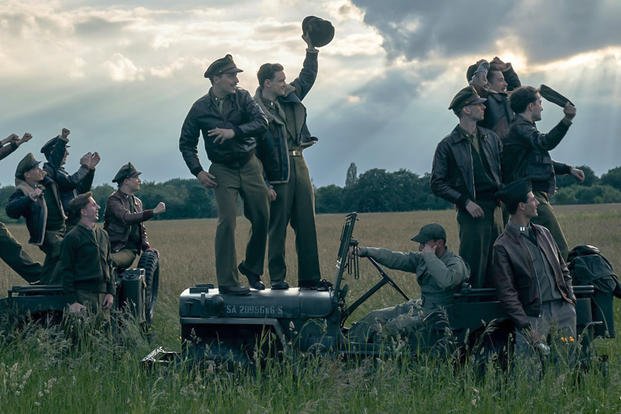Are you enjoying Hollywood’s recent spate of military aviation films as much as I am? From “Top Gun: Maverick” to “Devotion” (finally, a Korean War movie!) to “Masters of the Air,” our flying service members are getting some well-deserved attention.
For those not in the know, “Masters of the Air” is a nine-part miniseries by Apple TV+ that aired in the spring of 2024. It follows the deployment of the 100th Bomb Group, which was based in England and conducted dangerous daytime bombing missions into the heart of Germany during World War II.
You might not recognize the actors on screen, but you definitely know the people behind this series. Steven Spielberg won Academy Awards for directing “Schindler’s List” and “Saving Private Ryan.” Gary Goetzman produced “Band of Brothers” and “The Pacific.” Tom Hanks starred in “Saving Private Ryan.” Stephen Rosenbaum is the visual effects wizard behind “Jurassic Park,” “Avatar” and “Kong: Skull Island.”
Of course, the new series also stars one of the most significant aircraft in military history: the B-17 Flying Fortress. But as anyone who’s served on an air installation can tell you, planes can’t fly without extensive ground support — and I’m happy to report that “Masters of the Air” gives those service members and their vehicles some time in the spotlight.
Here’s what you should keep an eye out for when you watch (or rewatch) the series.
Jeeps Are Mandatory
The original Jeep is ubiquitous in movies and TV shows about World War II. That’s fitting since, according to Haggerty, more than 642,000 Jeeps took part in the conflict. The tiny 4×4 was one of the era’s undeniable heroes, and I’ve even argued that it’s the most significant military vehicle of all time.
I call the open-top vehicles in “Masters of the Air” Jeeps rather than Willys MBs, because the U.S. military used “Jeep” vehicles from more than one manufacturer during World War II. When the Willys factory couldn’t keep up with wartime demand, Ford chipped in by producing the nearly identical GPW. There are a few subtle differences, like a tubular front cross member on the MB and a beam front cross member on the GPW. At one point in the first episode, you can spot manual windshield wipers that suggest the vehicle in the scene is a Ford; Willys used vacuum-operated wipers, and France’s post-war Hotchkiss M201 used an electric motor in the center of the windshield.
British historian Stephen Carr has a fantastic breakdown of the MB, GPW and M201. Give it a watch if you want all the olive-drab details.
The Jeep was perfect for life on a military airfield. It was quick on grassy fields, open-topped for pilots and crew to dive into (or onto) and unflinchingly reliable. As wartime reporter Ernie Pyle said, “It did everything. It went everywhere. Was as faithful as a dog, as strong as a mule and as agile as a goat. It constantly carried twice what it was designed for and still kept going.”
The Jeep and B-17 make a great pair.
Finally, Some Love for the Dodge WC
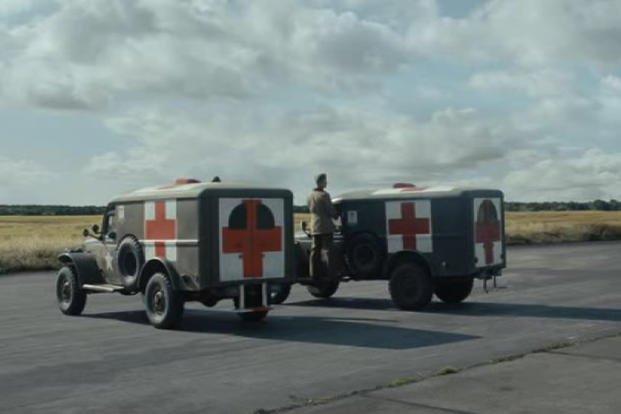
Everybody loves a Jeep, but I was psyched to see not one but multiple Dodge WC-series trucks in this Apple TV+ series.
The vehicles you see on screen represent the WC-54 ambulance configuration. According to the National WWII Museum, this variant was produced from 1942 to 1944 as the U.S. military’s primary ambulance during the war and could carry four stretchers or six seated patients.
When injured pilots and crew got back to base, they had presumably been in rough shape for hours. Airfields weren’t exactly safe spaces, either, so workplace accidents and injuries would have been fairly common. Having a capable, reliable fleet of ambulances on standby must have made everyone sleep a little better at night.
The WC was an underappreciated military vehicle that made significant contributions to the war effort and ended up kicking off a civilian auto trend to rival that of the mighty Jeep.
Most service members and car enthusiasts have never heard of them. A few might recognize the civilian-market Dodge Power Wagon that followed. What we all owe to this truck, though, is the advent of factory-available, four-wheel-drive pickups. That’s right: If you’ve got a 4×4 truck, you can thank Dodge’s World War II-era workhorse. Long live the Power Wagon.
GMC’s Heavy-Hauling CCKW
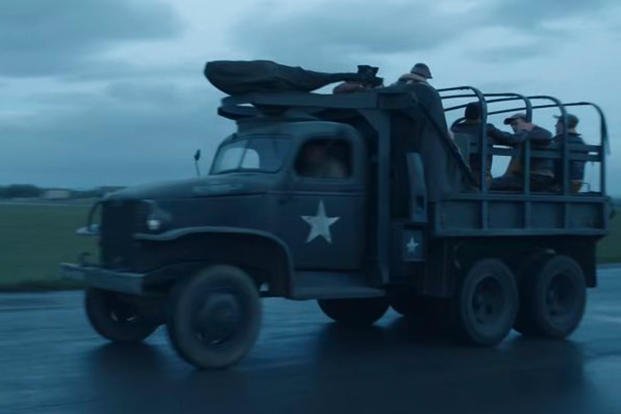
To most viewers, this truck probably looks vaguely familiar from its background appearances in other war movies. It wasn’t a front-line combat vehicle so it doesn’t get the same amount of attention as the Jeep, but the Allies probably wouldn’t have won the war without it.
It’s called the CCKW, and it was built by GMC. According to Truck Encyclopedia, GMC built 2.4 million “deuce-and-a-half” trucks (named for the 2.5-ton payload) from 1941 to 1945. They came in utility, dump-bed, open-top and box-truck variants. Some even had a bed full of anti-aircraft machine guns. Open-bed cargo trucks and fuel tankers might have been the most useful on airfields, though.
And they’re still tough as nails. Check out this unrestored 1943 CCKW (with one flat tire) making a playground out of Alaska snow.
Harley-Davidson WLA: America’s Motorcycle
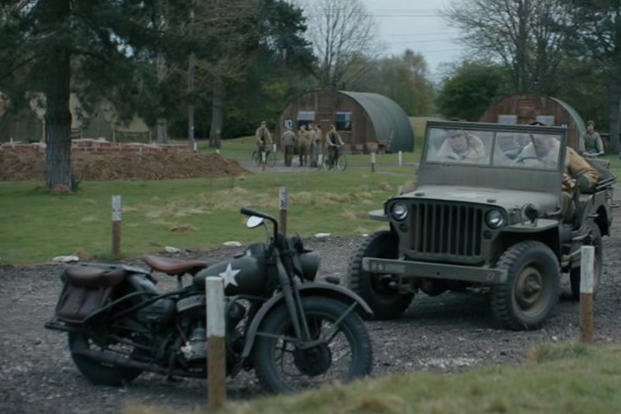
I’ve written about the Harley-Davidson WLA and its contribution to the history of military motorcycles before (seriously, I can’t stop talking about it). It’s easy to look at grainy old photos of WLA’s with Thompson submachine guns strapped to the side and imagine thrilling special operations raids deep behind enemy lines.
In reality, the WLA served in non-combat roles. According to Motorcyclist, their use was “limited to policing, scouting and courier duties, in stark contrast to WWI, when motorcycles were used for actual fighting.”
Harley-Davidson built more than 88,000 motorcycles for the U.S. military between 1941 and 1945, and the vast majority of those were WLA’s. Uncle Sam held onto about two-thirds of them, with the remaining third going to allied nations — including about 30,000 to the Soviet Union (imagine what one of those is worth now, comrade).
An Army airfield would have been a natural place for motorcycle couriers, who could roar out of the command center, slip between parked bombers and deliver critical intelligence in time for the next mission.
I’m sure they were strictly used for military purposes, too. They definitely weren’t involved with squiring local English girls to the pubs after hours; American service members would never dream of such things.
Federal 606
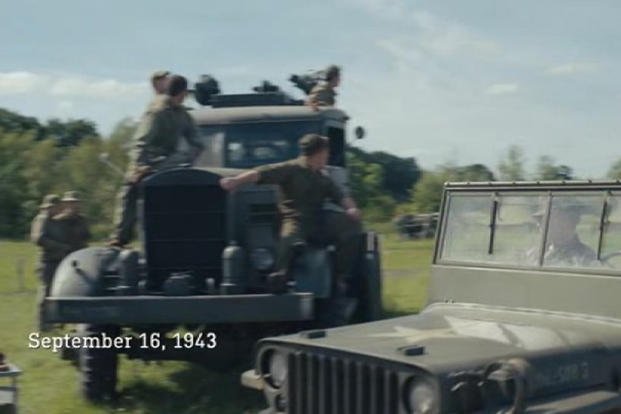
These days, service members call on the HEMTT or LVSR when a job requires serious heavy lifting. In World War II, they relied on the Federal 606.
According to copies of original documents available at Vintage Aircraft, the wrecker had a maximum payload of 13,000 pounds, a 15,000-pound winch and the ability to tow a 40-foot trailer on a fifth-wheel attachment behind the tow arm. It was strong enough to pull crashed bombers out of muddy English fields and get them back to the airfield for repairs or disassembly to salvage usable parts. On narrow country lanes, the 30-mph top speed would have been more than adequate (and the fuel economy of, ahem, three miles per gallon might have been an issue).
The Federal spec sheet I found doesn’t list a horsepower rating, but there’s ample photo evidence to prove that it was enough.
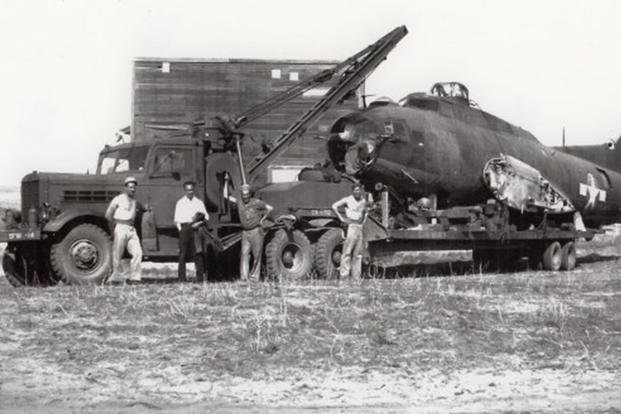
The Fast Cletrac M2 Tractor
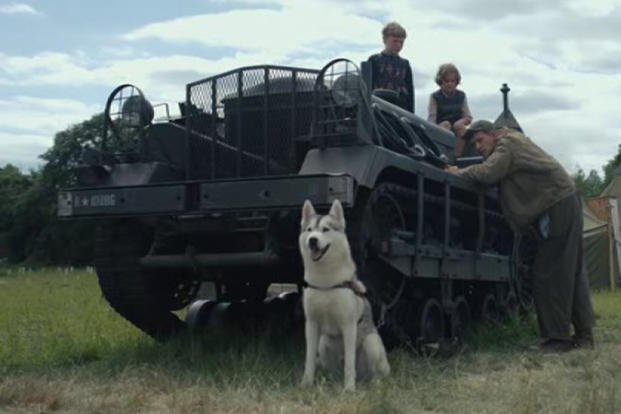
The U.S. bomber crews who took up residence on British farms during World War II might have been harvesting entire German cities instead of barley, but they still needed tractors — notably the Cleveland Tractor Company M2.
Unlike agricultural tractors of the time, the “Cletrac” was designed specifically for military use. According to the Estrella Warbirds Museum, its unconventional planetary differential gear sets made it safer on side-slopes, but prevented it from spinning in place like other tracked vehicles. It was also fast enough to be dubbed a “high-speed tractor” (add that to a list of things I didn’t know I needed).
The sporty tractor could tow parts and tools at a top speed of 22 mph. That may not sound like much to modern motorists, but I assure you it would have been thrilling to whoever was sitting on that open bench seat in the ’40s.
According to the National Museum of the United States Air Force, “the Cletrac was particularly effective for moving vehicles or aircraft that had become bogged down in mud. The M2 has a gross weight of 13,800 pounds and a maximum drawbar pull of 7,000 pounds. It also features an electric generator and an air compressor.”
The generator and air compressor are important features, because they allowed the ground crew to set up lights and use air tools to work on downed planes that were too damaged to move. Between the Cletrac M2 and the Federal 606, there probably wasn’t much airfield mechanics couldn’t fix.
The Furious M4A3 Sherman
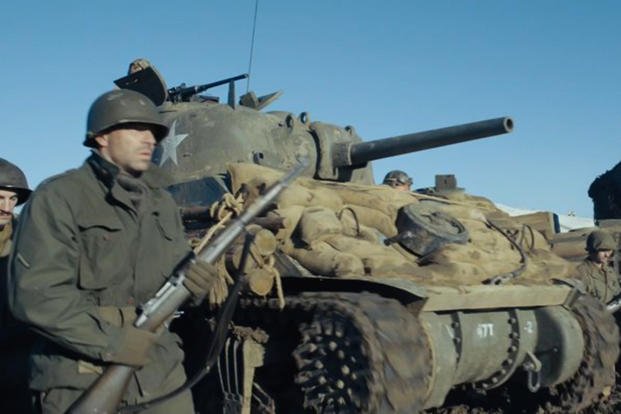
At the end of the series, we get a welcome visit from the M4A3 Sherman, the U.S. military’s tank of choice during World War II.
According to the National WWII Museum, more than 50,000 Sherman tanks were employed by the American, British, French, Chinese and Soviet militaries during World War II. The Sherman was notorious for catching fire, but it was ultimately successful in the face of superior machinery.
“The Sherman tank’s primary role was infantry support, spearheading attacks as well as bolstering defensive positions,” the National WWII Museum reports. “Though frequently outgunned by their German counterparts, Shermans proved easier to maintain — often fixed on the battlefield.”
Depictions of the Sherman in movies focus on its diminutive size compared to Germany’s fearsome Panzer and Tiger tanks. Watch “Kelly’s Heroes” or “Fury” to see what I mean (and to enjoy two excellent World War II movies).
It would have been unusual to see a Sherman far enough from the front lines to share a base with a bomber squadron, but there were ways for tank crews and bomber crews to cross paths.
In “Masters of the Air,” the little tank that could helps American troops liberate a prisoner of war camp that houses members of the 100th Bomber Group. Seeing a Sherman plow down the camp’s barbed-wire fence must have been the most beautiful sight imaginable to everyone trapped inside.
‘Masters of the Air’ Is War Theater Done Right
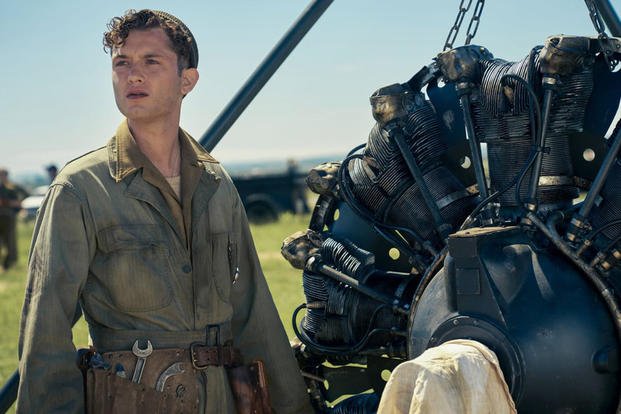
Storytelling is all about making the audience feel something. “All Quiet on the Western Front” drives home the hopelessness of war. “Saving Private Ryan” inspires faith in the goodness of man. “Masters of the Air” gives us a glimpse into the lives and deaths of “Bloody Hundredth” airmen who sacrificed life and limb to bring Nazi Germany to its knees.
War is full of heroes, villains, exaggerated exploits and unsung acts of sacrifice. The planes and crew of the 8th Air Force deserve recognition, and so do the ground crew and vehicles that kept them flying. I’m glad they got it.
Want to Know More About the Military?
Be sure to get the latest news about the U.S. military, as well as critical info about how to join and all the benefits of service. Subscribe to Military.com and receive customized updates delivered straight to your inbox.
Story Continues
Read the full article here


